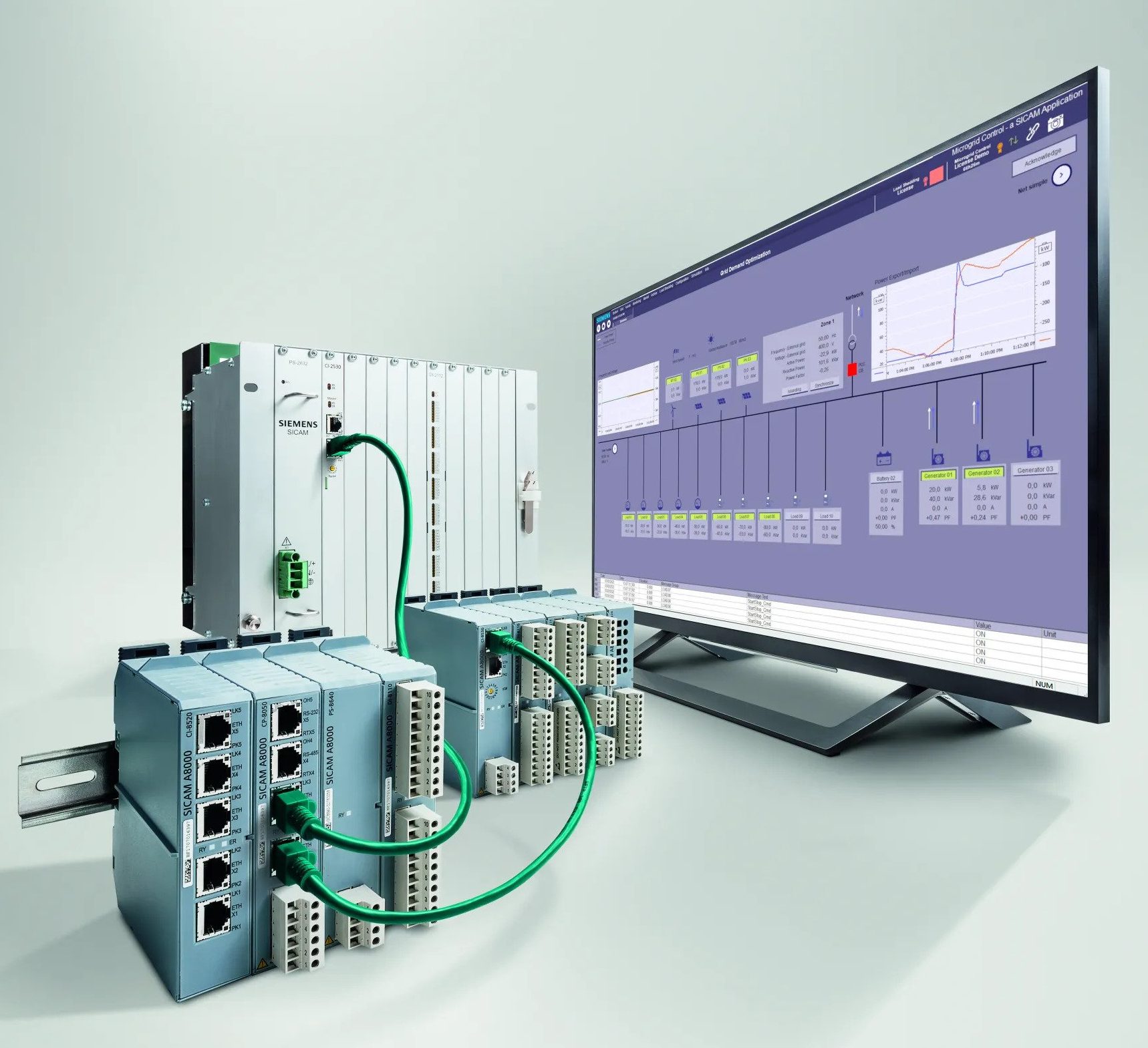
[ad_1]
//php echo do_shortcode(‘[responsivevoice_button voice=”US English Male” buttontext=”Listen to Post”]’) ?>
Microgrids, the microinverter-based solar and battery systems, are now a commercial reality. In fact, they are emerging as a manifestation of energy-as-a-service (EaaS) business models to replace traditional utility services.
There are even networks of microgrids that feature connection to the wider-energy system while linking to different types of renewable and traditional energy generation sources. These networked microgrids can hook up directly to building loads, such as a large industrial motor. In other words, they are taking renewable energy generation beyond rooftop and cable-fed field installations.
But before talking about microgrids installations, it’s important to understand the design anatomy of microgrids.
Microgrid’s major building blocks
Sam Abdel-Rahman, system architect for Residential Solar and Energy Storage Systems at Infineon Technologies, outlined the five key design ingredients—or basic building blocks—of microinverter-based microgrids. First and foremost, microinverters are small, grid-tied inverters that are installed on each solar panel. They convert DC power from the solar panels into AC power.
Not only are microinverters trending to higher power, but there are also new multi-photovoltaic (PV), panel-based microinverter architectures that enable higher power generation in a microgrid, according to Abdel-Rahman.
“From a microinverter design perspective, this pushes designers to adopt new package and chip technologies to fulfill the new trends and requirements.” For example, new microgrid designs can capture performance and system cost benefits with wide-bandgap (WBG) technologies, such as gallium nitride (GaN) and silicon carbide (SiC) power switches in surface mount topside cooling and low inductance packages.
Second, energy storage systems (ESSes) store excess energy generated during periods of high production and discharge it during periods of high demand. “It’s a major ingredient of the microgrid that stores excess energy generated and discharges it during the low solar production,” Abdel-Rahman said. “Microgrids cannot be energy independent or reliable without storage.”
Third, the power management system—a central control system—manages the flow of power within the microgrid. It monitors power production and demand and controls the ESS.
Fourth, communication systems like sensors and smart meters facilitate communication between the components of the microgrid, enabling remote monitoring and control.
Finally, protection systems like fuses, breakers and surge protectors ensure the safety and reliability of the microgrid by preventing equipment damage in the event of a fault or surge.
Microgrid design examples
When examining microgrid use cases that employ these building blocks to create distributed grid architecture and assets, take the example of an 11.34-MW microgrid being built at John F. Kennedy (JFK) International Airport’s New Terminal One. It aims to deliver immediate greenhouse gas emission reductions of 38% with grid-sourced energy, otherwise sufficient to power 3,570 average U.S. homes for one year. Moreover, the rooftop PV system will have over 13,000 solar panels, and electricity generated by the solar array alone will be sufficient to power the equivalent of 1,039 average U.S. homes for a year.
The microgrid being built at JFK Airport comprises four “power islands,” and each island will function as a local, integrated energy system with sources of generation, storage, advanced automation and control. The microgrid encompasses 7.66 MW of rooftop solar, 3.68 MW of fuel cells, and 2-4 MWh of battery energy storage. Additionally, it will utilize reclaimed heat to generate chilled water and heat hot water.
Annette Clayton, CEO of Schneider Electric North America, claims microgrids solve two of the most serious challenges with a single solution: resilience and decarbonization. Schneider Electric, which designs, builds, owns, operates and maintains tailored energy infrastructure, will deliver the microgrid through its joint venture, AlphaStruxure, with global investment firm Carlyle.

A medium voltage microgrid in the industrial area of Marjamäki, Finland, presents another example of creating an energy community with decentralized generation of renewable energy. It comes equipped with an ESS and a grid automation system that facilitate a cost-effective and environmentally friendly energy system—all while guaranteeing a secure electricity supply. A microgrid controller ensures reliable monitoring and controlling, as well as blackout protection.
In this microgrid, energy will be produced by two solar panel fields with an annual electricity output of 3,600 MWh. It will feature over 15,000 panels, six gas motors, and fuel cells.
The first renewable energy success story
Renewable energy is in the political limelight right now, and there’s a lot of talk about SiC and GaN semiconductors as major facilitators in this technology undertaking. However, it’s important to note that microgrids, also known as smart grids, mark the first major success story in this drive for a reduction in greenhouse gas emissions.
Microgrid technology has been evolving steadily during the past decade, and advancements in power semiconductor designs and packages will inevitably bolster microgrid infrastructure in the future. It will also boost EaaS initiatives while creating new investment and entrepreneurial opportunities in the tech industry.
[ad_2]






